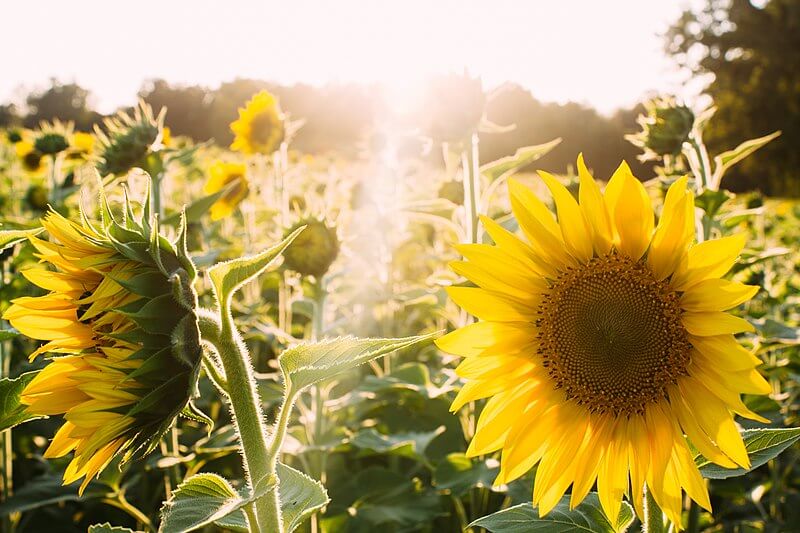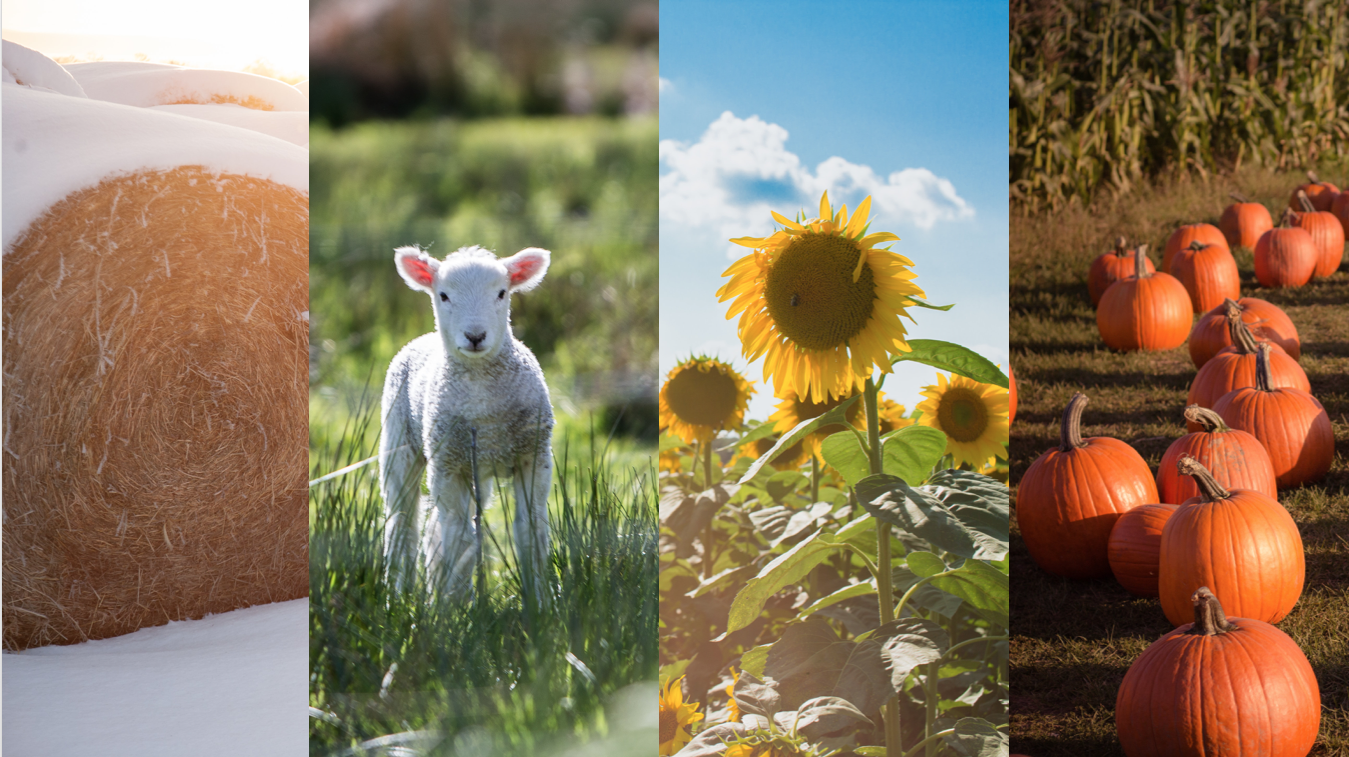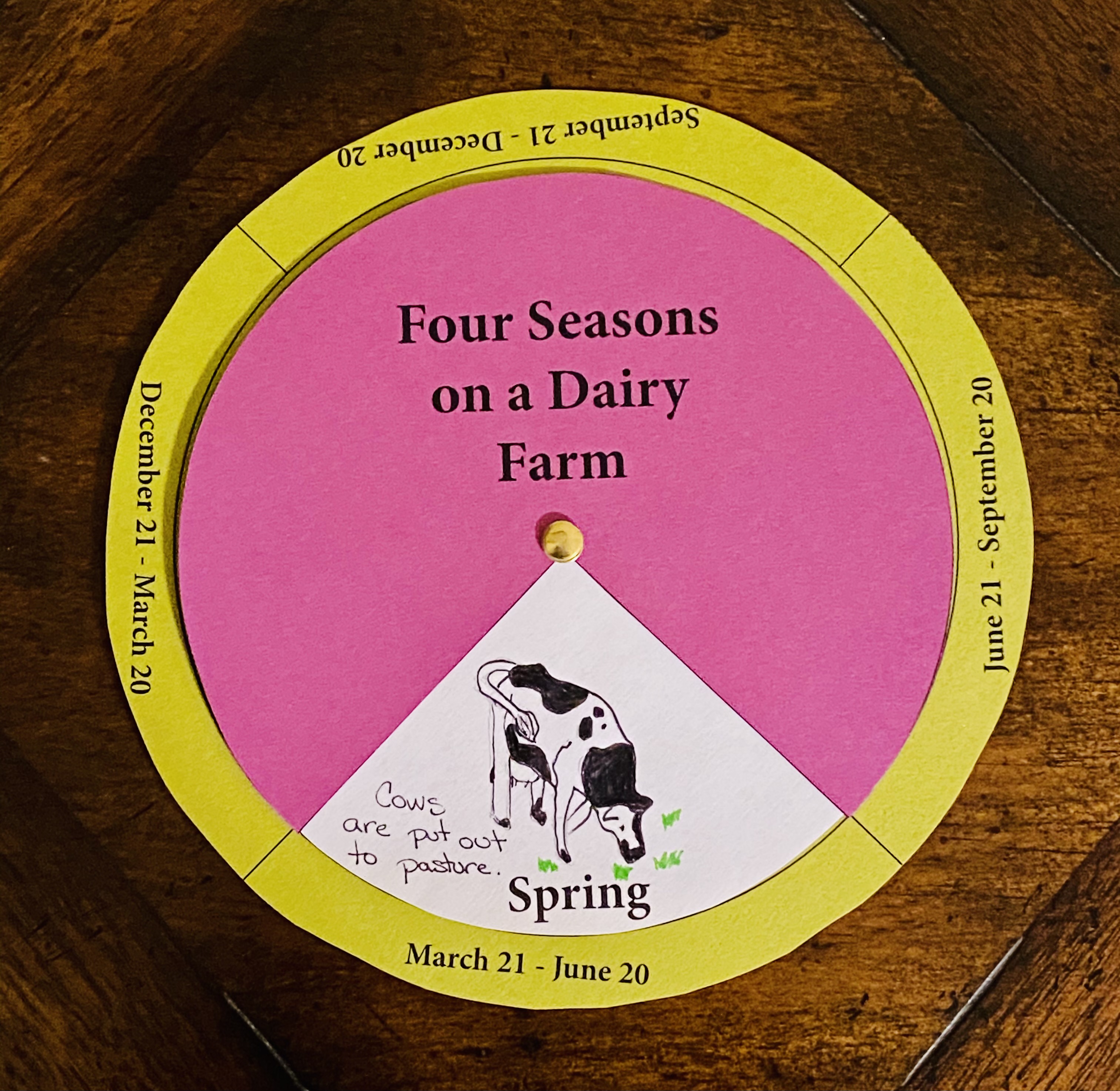Four Seasons on a Farm
Students identify the characteristics of the four seasons of the year, investigate what causes seasons, and observe the effects changing seasons have on farms.

Background
Lesson Activities
Recommended Companion Resources
Credits
Author
Lynn Wallin | National Center for Agricultural Literacy (NCAL)
Standards
Indiana Content Area Standards
-
English Language Arts.Kindergarten.W.1
Write for specific purposes and audiences.
- Handwriting.K.W.2.1: Write most uppercase (capital) and lowercase letters of the alphabet, correctly shaping and spacing the letters of the words.
- The Writing Process.K.W.4: Apply the writing process to a. With support, revise writing by adding simple details; review (edit) writing for format and conventions (e.g., correct spelling of simple words, capitalization of the first word of the sentence). b. Use available technology to produce and publish writing.
- Writing Genres.K.W.3.2: Use words and pictures to develop a main idea and provide some information about a topic.
- Writing Genres.K.W.3.3: Use words and pictures to narrate a single event or simple story, arranging ideas in order.
-
English Language Arts.Kindergarten.SL.1
Listen actively and communicate effectively with a variety of audiences and for different purposes.
- Discussion and Collaboration.K.SL.2.1: Participate in collaborative conversations about grade-appropriate topics and texts with peers and adults in small and larger groups.
- Discussion and Collaboration.K.SL.2.3: Listen to others, take turns speaking, and add ones own ideas to small group discussions or tasks.
- Discussion and Collaboration.K.SL.2.5: Continue a conversation through multiple exchanges.
- Presentation and Knowledge and Ideas.K.SL.4.1: Speaking audibly, recite poems, rhymes, and songs, and use complete sentences to describe familiar people, places, things, and events and, with support, provide additional details.
- Presentation of Knowledge and Ideas.K.SL.4.3: Give, restate, and follow simple two-step directions.
-
Social Studies. Kindergarten: Geography: Standard 3
Students understand that maps and globes are different representations of the Earths surface and begin to explore the physical and human geographic characteristics of their school, neighborhood, and community.
- K.3.1 World in Spatial Terms: Use words related to location, direction, and distance, including here/there, over/under, left/right, above/below, forward/backward, and between.
- K.3.5 Physical Systems: Describe and give examples of seasonal weather changes and illustrate how weather affects people and the environment.
-
Social Studies. Grade 1: Geography: Standard 3
Students identify the basic elements of maps and globes and explain basic facts concerning the relationship of the sun to daily and seasonal weather. They identify selected geographic characteristics of their home, school, and neighborhood.
- 1.3.1 World in Spatial Terms: Identify the cardinal directions (north, south, east, and west) on maps and globes and at the classroom/school.
- 1.3.2 World in Spatial Terms: Identify and describe continents, hemispheres, oceans, cities, and roads on maps and globes.
- 1.3.5 Physical Systems: Summarize weather patterns in the community, including temperature, precipitation, cloud cover and the amount of sunlight during the different seasons of the year in relation to the Earth/sun relationship.
- 1.3.6 Physical Systems: Explain the effect of seasonal change on plants, animals, and people.
-
Social Studies. Grade 2: Geography: Standard 3
Students locate their community, state and nation on maps and globes; identify major geographic characteristics of their local community; explore geographic relationships between the physical and environmental characteristics of their community; and compare neighborhoods in their community to those in other parts of the world/country.
- 2.3.1 The World in Spatial Terms: Use a compass to identify cardinal and intermediate directions and to locate places on maps and places in the classroom, school and community.
- 2.3.2 The World in Spatial Terms: Locate the equator, the poles, continents, and hemispheres on a world map and on a globe; identify the local community, city, Indiana, the United States, and North America on a world map and on a globe.
- 2.3.5 Physical Systems: On a map, identify physical features of the local community and relate how seasons may or may not impact those features.
-
English Language Arts.Grade 1.W.1
Write routinely over brief time frame and for a variety of purposes and audiences.
- Handwriting.1.W.2.1: Write all uppercase (capital) and lowercase letters legibly, and space letters, words, and sentences appropriately.
- Writing Genres.1.W.3.3: Develop topics for stories or poems, using precise words to describe characters and actions and temporal words to signal event order, with ideas organized into a beginning, middle, and ending.
-
English Language Arts.Grade 1.SL.1
Listen actively and adjust the use of spoken language (e.g., vocabulary) to communicate effectively with a variety of audiences and for different purposes.
- Discussion and Collaboration.1.SL.2.1: Participate in collaborative conversations about grade-appropriate topics and texts with peers and adults in small and larger groups.
- Discussion and Collaboration.1.SL.2.3: Listen to others, take turns speaking about the topic, and add ones own ideas in small group discussions or tasks.
- Discussion and Collaboration.1.SL.2.5: Build on others talk in conversations by responding to the comments of others through multiple exchanges.
- Presentation of Knowledge and Ideas.1.SL.4.1: Speaking audibly and using appropriate language, recite poems, rhymes, songs, and stories, with careful attention to sensory detail when describing people, places, things, and events.
- Presentation of Knowledge and Ideas.1.SL.4.2: Add drawings or other visual displays, such as pictures and objects, when sharing information to clarify ideas, thoughts, and feelings.
- Presentation of Knowledge and Ideas.1.SL.4.3: Give and follow three- and four-step directions.
-
English Language Arts.Grade 2.W.1
Write routinely over brief time frames and for a variety of tasks, purposes, and audiences; apply reading standards to write in response to literature and nonfiction texts.
- Handwriting.2.W.2.1: Write legibly by forming letters correctly and spacing words and sentences properly.
- Writing Genres.2.W.3.3: Develop topics for friendly letters, stories, poems, and other narrative purposes that a. Include a beginning. b. Use temporal words to signal event order (e.g., first of all). c. Provide details to describe actions, thoughts, and feelings. d. Provideanending.
-
English Language Arts.Grade 2.SL.1
Listen actively and adjust the use of spoken language (e.g., conventions, vocabulary) to communicate effectively with a variety of audiences and for different purposes.
- Discussion and Collaboration.2.SL.2.1: Participate in collaborative conversations about grade-appropriate topics and texts with peers and adults in small and larger groups.
- Discussion and Collaboration.2.SL.2.3: Listen to others, take ones turn in respectful ways, and speak one at a time about the topics and text under discussion.
- Discussion and Collaboration.2.SL.2.5: Build on others talk in conversations by linking comments to the remarks of others.
- Presentation of Knowledge and Ideas.2.SL.4.3: Give and follow multi-step directions.

 student with the three printouts of the
student with the three printouts of the